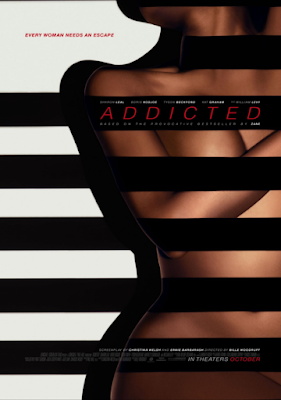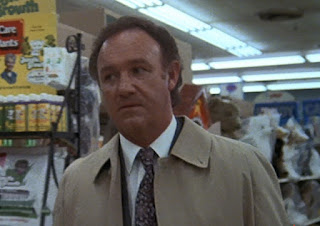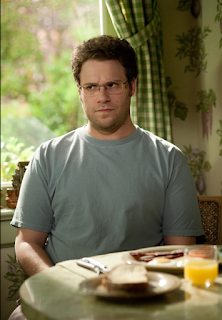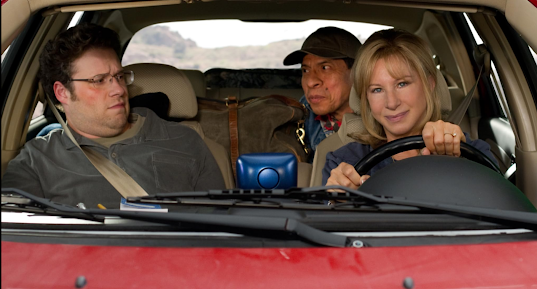Way back in 2020,
when I reviewed Stephen Lewis’ novel
The Love Merchants, I mentioned that
I planned on reviewing his 1982 gothic horror
Buried Blossoms someday.
Well, that day has come.
When I first teased
this eventual review, I referred to Buried Blossoms as a “Flowers in
the Attic knock-off,” an observation I based solely on the book’s cover. There
are some similarities between Blossoms and V.C. Andrews’ mega-hit Flowers—a
wealthy, fucked-up family, children living in isolation, incest—but it’s not a
direct rip-off. In Blossoms, the children of the wealthy Hazeltine
family aren’t the victims of evil adults but rather corrupted by their domineering
father, who uses his money to isolate himself and his family from the New
England town in which they live.
That town is Eastfield,
Massachusetts, the founding of which we learn far more than is necessary to the
story. All you really need to know is the town has planned a bicentennial celebration
July 4, 1896, and Paul Hazeltine, owner of the Hazeltine Buggy Works, the town’s
largest employer and responsible for Eastfield’s current notoriety and
prosperity, has been tapped to be the event’s keynote speaker.
His acceptance of
the gig is something of a surprise as Paul Hazeltine has made it abundantly
clear that he gives not one shit about the silly residents of Eastfield. He keeps
his family sequestered in a palatial estate outside the city limits, his beautiful,
compliant wife Olivia and their children only venturing into town for
infrequent shopping trips. The kids don’t even attend school, Paul Hazeltine insisting
that they be home schooled instead, not for religious reasons (he’s a staunch
atheist) but because he doesn’t want his children mingling with the lowly town folk.
His son, Paul, Jr.,
buys into the belief that their family is superior. When he’s taunted by one of
the local boys during one of those rare shopping trips, Paul, Jr., calmly tells
him to stop.
“Why?” the boy who
started [sic] teased. “What are you gonna do about it? Fight?”
Paul Hazeltine,
Jr., shook his head. Instead of the reaction his tormentor had expected, his
face was set in a superior smile.
“What then?”
“I’m going to tell
my father,” Paul said. “And then your father won’t have a job. And you won’t
have any food. And you’ll die.”
Unlike her brother,
the oldest Hazeltine daughter Francine isn’t interested in being superior to other
kids, she wants to be one of them, to have friends. She wants a friend so badly
she later invents an imaginary one named Jane. Her mother wants the same thing, and even summons
the courage to ask her husband if they could, perhaps, host a party at their
house. His response is immediate and harsh: “Certainly not!” Olivia demurs,
because it’s 1896.
The day of the
bicentennial arrives, and the Hazeltines make their grand entrance driving to
the event in an electric car developed at the Buggy Works. Paul Hazeltine touts it as a sign of
things to come. Electricity, he tells the crowd, will power carriages and power
homes. This being a time before people worshiped the rich and took their word
as gospel, the crowd is skeptical, some of them mocking Paul Hazeltine for
suggesting such a ridiculous idea. Eventually, he wins residents over, selling
them on the idea that Eastfield, currently benefitting from the success of
Hazeltine Buggy Works, will soon grow exponentially when the Hazeltine Electric
Car carries them into the 20th century.
The novel doesn’t
really get hopping until it jumps to 1903. Olivia’s fifth child (besides Paul,
Jr., and Francine, there’s Margaret and Constance, the youngest) is stillborn,
and so deformed it’s barely recognizable as human (Its mouth and nose were
one. There were gill-like slits at its throat and rigid flaps of skin where its
arms and feet might have been.) The Hazeltine Electric Car has stalled and
died, losing out to gas-powered cars. Rather than live with his failure, Paul
Hazeltine, locked alone in his study, kills himself by drinking ink, of all
things.
It’s Olivia, deciding
to surprise her husband with a midnight visit to his study, who discovers his body
and promptly loses her mind. Refusing to admit the reality of his death, Olivia
tosses Paul’s suicide note into the fire and then drags her husband’s corpse
out of the house, which sort of strains credulity. Olivia is described as having
a slender build and, at this point in the story, has a growing dependence on morphine.
It seems unlikely she could drag her husband’s dead ass through the house by
herself without drawing the attention of one of her children or their maid,
Brigid. But no one ever hears her, and so Olivia drags Paul’s body out to the ice house and buries him
there.
No one hears Olivia
as she disposes of Paul’s body, but her teenaged children Paul, Jr., and
Francine see her from their bedroom windows. Her children don’t confront
her the next morning, however, even when Olivia announces that their father has
been called away on business. “But we have a man of the house all the same,” she
tells her children, referring to her son. Paul, Jr. The little fucker immediately embraces his new role, asking if he could take his father’s place
at the head of the table until his father returns, knowing he never will. Olivia
agrees, before drinking a glass of morphine-spiked water, because ladies don’t
mainline.
 |
| Jove Books gave Buried Blossoms a snazzy keyhole cover |
Incest,
Madness and Murder
Paul Hazeltine was cold
and domineering. His son, on the other hand, is a little psychopath. He
overhears Francine telling her imaginary friend Jane that Olivia is mad and
confronts her, slapping her and pinning her to the floor.
Paul’s hand covered
her mouth, then his face pressed against hers and his hands were all over her
at once, along her legs, under her dress.
When she tried to
pull away, he pinched her, butting his head against her face. He forced his
hand between her legs, laughing to himself as she shook with terror. Then, as
suddenly as it had begun, the attack was over.
“I’m the man of the
house now,” Paul told her, standing up, smiling, leaving.
 |
Buried Blossoms is better edited than the typo-riddled Love
Merchants, but a copyeditor clearly lost his/her place when
copying and pasting sentences in this paragraph. |
It’s not long
before Paul, Jr., is sexually assaulting Francine on a regular basis (though
Francine is sometimes aroused when her brother forces himself on her, which adds
another layer of shame). But Francine isn’t the only one of his sisters that
Paul, Jr., assaults. The maid, Brigid, checks on Margaret and Constance taking
a bath, only to discover Paul is with them, coaxing his little sisters into mimicking
the acts from a pornographic illustration found in one of their late father’s
books (“We’re playing French ladies.”)The maid is horrified
further when Paul takes a cross from his pocket—a cross that Brigid had given
Francine earlier—and slips “the chain over his penis, so that the cross dangled
from it.”
Brigid flees the
bathroom, intending to flee with the girls, but making no effort to get them away
from their brother at that very moment. Paul, Jr., doesn’t remain in the bathroom,
instead following Brigid, taunting her with his cross-festooned dong. Were it
not for what transpired immediately prior, the mental picture of Brigid fleeing
in terror from a teenager brandishing his hard-on is kind of funny. The
laughter ends when Brigid is at the top of the stairs and Paul throws the
crucifix at her, sending a startled Brigid tumbling down to the first floor, to her death.
Francine realizes
escape is necessary if she’s the avoid the fates of Brigid or her mother, who is
now floating through her days zombified on morphine and wine. During a trip to town
to collect the family’s mail from the post office, she’s offered a ride from a young
traveling salesman named Ned. Ned’s motives are sus, but Francine doesn’t give
a shit. Not only is the salesman cute, but he’s also a potential savior. So what
if it takes a blowjob and a quick fuck to convince him to take him with her?
One of the bigger
surprises in Buried Blossoms is that Francine’s planned escape with Ned goes
off without a hitch. I really expected Ned not to show up to their planned
meeting at the train station, or for Paul to stop her from keeping the date,
but Ned does, and Paul doesn’t. Ned does ditch her not long after (turns out he was already married; I knew he
was a piece of shit), but Francine doesn’t care. She’s out of Eastfield and
away from her fucked-up family.
While it’s great
that Francine got away from her horrible life in Eastfield, we’re only at the
novel’s midpoint, making it a little soon to dismiss her awful family from the
story.The author evidently realized this, as he returns Francine to Eastfield 20
years later.
In those 20 years,
Francine became an actress. Now known as Francine Le Faye, she travels the country in
touring productions of Broadway plays, which is how she ends up in Eastfield.
She’s understandably nervous about being there—she has, in the past, turned down
roles in plays that would take her in the vicinity of her family home—but she’s
also curious about what’s happened to her family, her mother and sisters especially.
So, against her better judgment, she pays them a visit.
She’s alarmed to discover
that the Hazeltine estate has fallen into disrepair, its once-cultivated
gardens overgrown with weeds, the house itself overgrown with vines. Margaret
and Constance answer the door, and though they are grown women they act like
little girls, and they behave as if they’re members of a religious cult. Their
answers to her questions are cryptic: their mother has “gone away”; their
brother is “the same.” Creepy as they are, visiting with her sisters is
reasonably pleasant. That changes when her brother. enters the room.
But Paul, Jr., coldly
indulges Francine’s visit, giving equally evasive answers to her questions
about their mother. Margaret and Constance then give her a cup of tea. “You wanted
something of Mother’s,” Paul said. “So now you have her favorite. Her medicine.”
Francine’s visit becomes
imprisonment, during which her brother and sisters cut off all her hair and
repeatedly sexually assault her. It should be mentioned here that although
Lewis’ writing career was primarily made up of porny “exposés” about
prostitution (Massage Parlor; Teenage Hookers; Housewife
Hookers) and novels about the sexploits of the rich and famous (The Best
Sellers; Expensive Pleasures), and the 1980s still being a time when the
marketplace rewarded graphic descriptions of sex, no matter how repugnant the
circumstances, the descriptions of sex acts in Buried Blossoms are relatively
restrained. In fact, Lewis or whoever (see below) adopts an almost stream-of-consciousness style as
Francine struggles to make sense of what’s happening to her, thinking it’s a
dream.
It’s not a dream, but
it’s not a nightmare from which she’ll wake up anytime soon, even after she escapes,
burned, battered, bald, and batshit. For the rest of the book, Francine will
remain hospitalized, in a catatonic state and unable to tell the investigators
her name, let alone what happened to her.
The remainder of
the book concentrates on Paul, Jr., Margaret and Constance, detailing their lives
in the early1940s as an incestuous throuple, Paul, Jr. hunting game (and
killing a kid who dared knock on their door), with Margaret cooking their meals with
assistance from Constance. Rather than any great dénouement, however, they merely
get old and die, one by one.
Was
Blossoms Ghostwritten? Let’s Speculate!
Buried Blossoms was not Lewis’
first foray into the horror genre, at least judging by titles in his
bibliography. He previously published Something in the Blood and Natural
Victims, though I couldn’t even find a cover of either online, let alone synopses,
so their being horror novels is an assumption on my part.
 |
Stephen Lewis’ author photo from
the back of his 1973 book, Sex
Among the Singles. |
I couldn’t find
much about Lewis, either. That’s not surprising. He wasn’t exactly the type of
author that got profiled in
Publishers Weekly, though the
Glorious Trash blog found this
1974 profile in the
Detroit
Free Press. Among its revelations: Lewis never went to college, he watched
game shows while he wrote, and at the time he raked in $250,000 annually cranking
out paperback originals.
So, given Lewis’
history of writing sleaze and not putting much effort into doing so, I really had
my doubts he’d be as adept at writing horror, yet Buried Blossoms is
actually pretty effective. It’s superior in many ways to the other Lewis novel
I’ve read, The Love Merchants. As much as I enjoyed The Love
Merchants, I could fully believe that it was cranked out while he kept one
eye on his game shows. But Buried Blossoms reads like it was written
with a bit more care, like Lewis was interested in doing more than just getting
paid and left the TV off. However, Blossoms was published a year after
his death, with the copyright belonging to a George Kuharsky. At first, I naively thought Kuharsky was a family member or partner who inherited Lewis’ unpublished manuscript, but I'm now more inclined to believe he was a ghostwriter hired to complete Lewis’ unfinished book.
Adding credence to
that ghostwriter suspicion is the uneven quality of Blossoms, which
never adds up to a satisfying whole (mitigating factor: The Love Merchants wasn’t
exactly a fully satisfying read, either). It either needed to be a lurid family
saga told in 400-plus pages, or a more concise gothic horror, told in under 200.
Instead, it’s a meandering 297 pages, not really getting to the creepy stuff until
nearly 80 pages in. I’d be tempted to blame this on Lewis trying to reach a
specific page count, except some of the chapters seem a little too fussy,
like the five pages detailing Eastfield’s founding. Beyond being four
more pages than Lewis would ordinarily supply, this chapter includes way more research of Massachusetts history than I’d expect from an author
more inclined to detail the sexual adventures of hookers while he watched The Price is Right. But, who knows, maybe
Lewis took an interest U.S. history before dying in his early 30s.
Despite its uneven
storyline, and regardless of who ultimately wrote it, Buried Blossoms is worth
checking out, and usually pretty easy to find for sale online, at affordable
prices, too. Reading it made me tempted to check out one of Lewis’ other (presumed)
horror novels, which are also for sale online. However, I’m more tempted to
read and review his other posthumously published novel from the gay publishing house Alyson:
 |
| Stephen Lewis’ last (?) published novel. |































